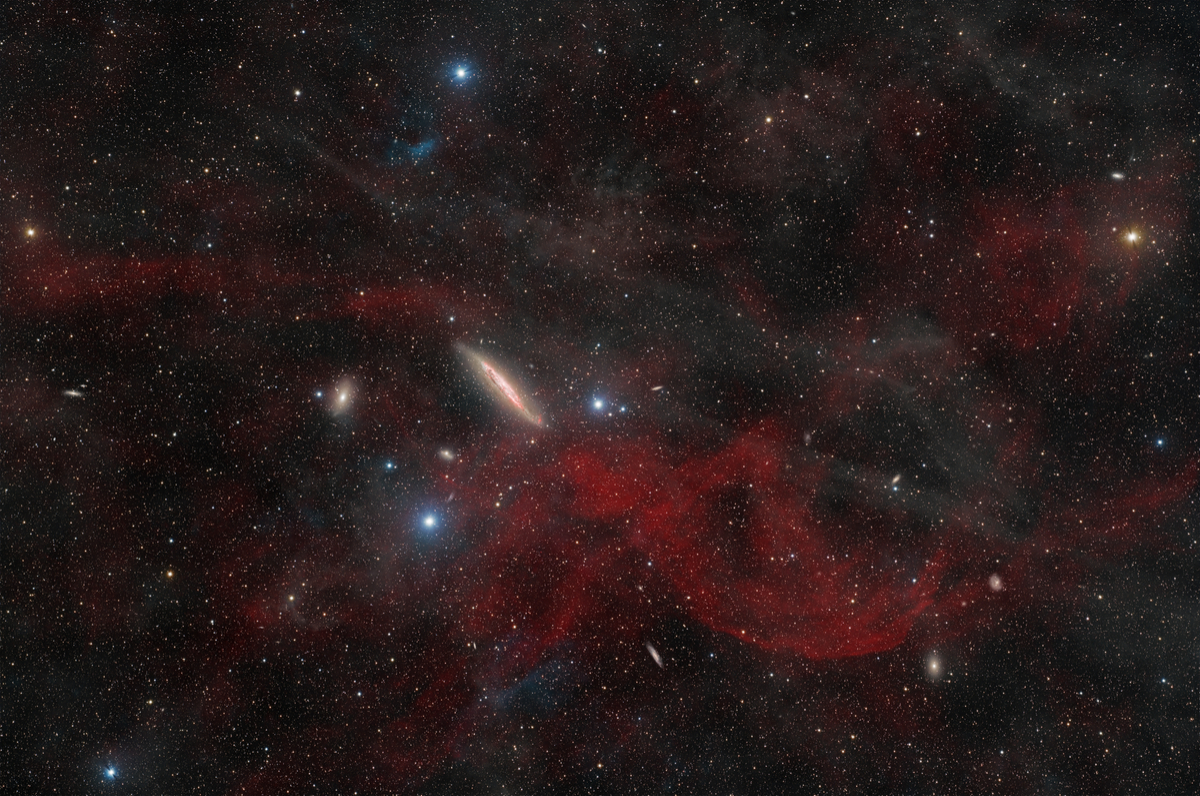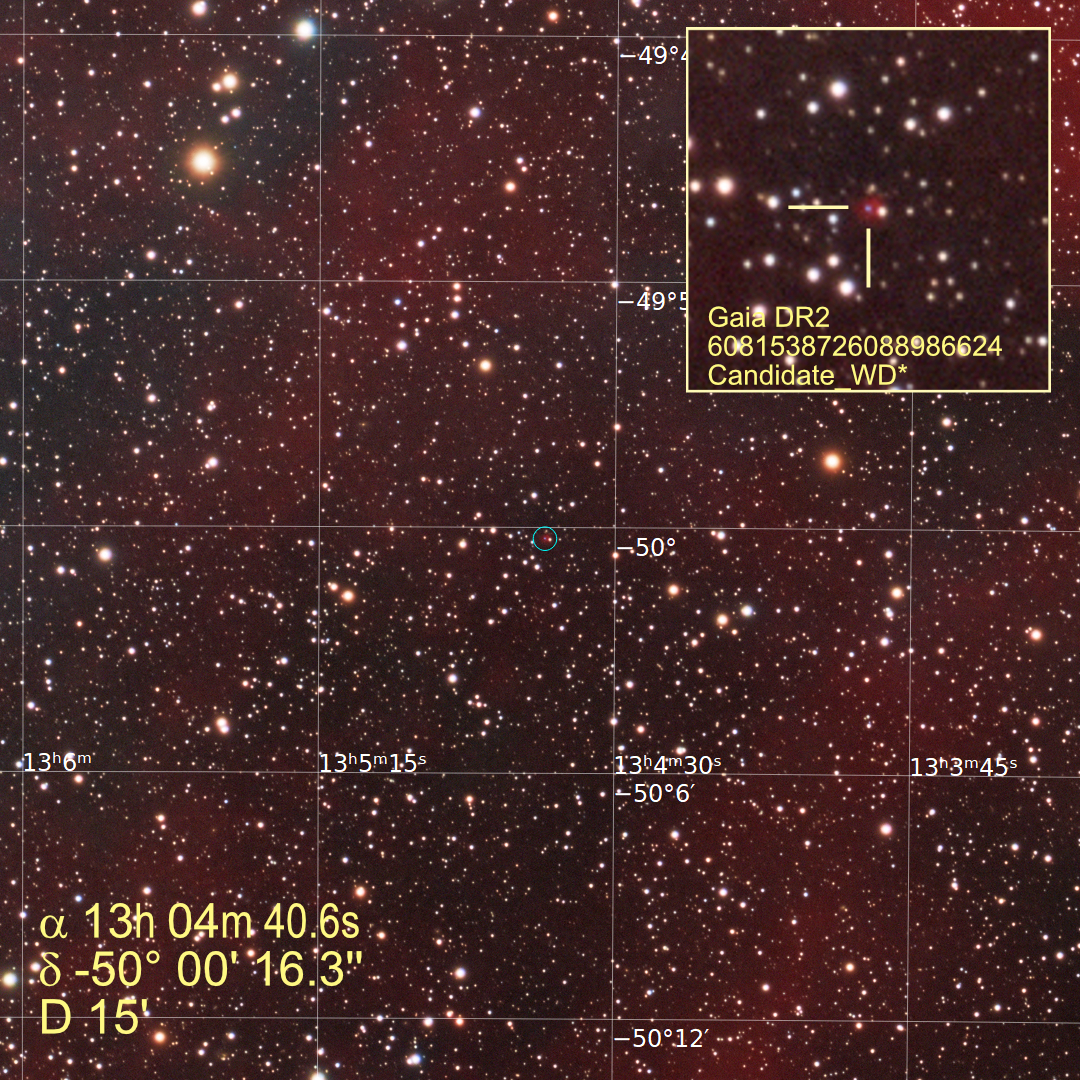
[back] NGC 4945 (wide field) in Centaurus [NED]
Higher resolved uncroped image /
höher aufgelöstes unbeschnittenes Bild (9505 x 6298 Pixel)
Annotated
uncroped image (9505 x 6298 Pixel)

|
Type SB(s)cd |
|
0.5° |
|
(c) 2025 All astro photo images are copyrighted. They may not be used or reproduced without explicit written permission from the authors.
About this Image / Über dieses Bild
| Camera: | Moravian C3-PRO-61000 Mono CMOS |
| Image Type, Orientation: | L-RGB-HaOIII Color Composite, North is at 12:00 |
| Exposure time: | L: 35 x 300s, RGB: 15/15/14 x 300s, Ha: 240 x 300s, OIII: 240 x 300s (46:35h total) |
| Exposure date: | June 6th, 2024..July 8h, 2024 |
| Location: | Capella Observatory South at Kiripotib Astro Farm, Namibia |
| Filter: | Astronomik Deep-Sky Deep-Sky RGB Filter plus 6nm Ha, OIII filters on Moravian EFW-3L-9-II External Filter Wheel |
| Instrument: | "Callisto", a Takahashi FSQ 106N, 530mm focal length, 106mm aperture, f/5 on modified Losmandy G11 (high res encoders with OnStepX) |
| Photographer: | Rainer Raupach, Josef Pöpsel, Frank Sackenheim |
|
Remarks: |
A deep image of the galaxy
NGC 4945 (also known as Caldwell 83), located in the constellation Centaurus.
It is classified as a barred spiral galaxy and a Type II Seyfert galaxy. The
latter designation indicates that its core emits strongly not only in the
ultraviolet and X-ray wavelengths, but also in the infrared. Furthermore, it
is visible as a radio source and appears in both the Parkes Radio Sources
Catalogue (PKS) and the Parkes-MIT-NRAO (PMN) surveys. NGC 4945 lies approximately 11 million light-years away and, along with Centaurus A, is a member of the LGG 344 subgroup of the Centaurus A/M83 Group—a complex galaxy group spanning the constellations Virgo, Hydra, and Centaurus. This group is itself part of the larger Virgo Supercluster. Clearly visible in the background is the galaxy group LGG 330, which includes, for example, the elliptical galaxy NGC 4976, located to the east of NGC 4945. Due to the depth of the image, particularly in the H-alpha and [O III] bands with exposure times of 20 hours each, numerous diffuse structures are revealed that belong to the Milky Way. Thanks to continuum subtraction (CS) techniques, galactic cirrus and H-alpha emission can be clearly distinguished. A remarkable feature of this image is the identification of two potentially new planetary nebulae, based on their intensity in the continuum-subtracted data and the presence of a white dwarf (as characterized in the Gaia DR3 catalog) at the central position of each candidate. These are located at the provisional galactic coordinates G305.6+14.1 and G305.1+12.8. Both candidates have been submitted for verification at PlanetaryNebulae.net and are currently awaiting confirmation. Detailed views of each object are provided below. A detailed view done by Ganymed in pimary focus about 20 years before can be found here. |
|
Bemerkungen: |
Ein tiefe Aufnahme der Galaxie NGC 4945
(auch Caldwell 83) im Sternbild Zentaur. Klassifiziert ist sie als
Balkenspirale und Seyfert-Galaxie vom Typ II. Letzteres bedeutet, dass sich
der Kern nicht nur als starke UV und Röntgen-Quelle zeigt, sondern auch im
Infraroten. Außerdem ist sie als Radioquelle sichtbar, weswegen der Kern im
Parkes Radio Sources Catalogue (PKS) und den Parkes-MIT-NRAO (PMN) Surveys
erscheint. |
Unknown PN Kandidate No. 1

(c) 2025 All astro
photo images are copyrighted. They may not be used or reproduced without
explicit written permission from the authors.
Unknown PN Kandidate No. 2

(c) 2025 All astro
photo images are copyrighted. They may not be used or reproduced without
explicit written permission from the authors.
Back to the Galaxies' Overview / Zurück zur Galaxien-Übersichtsseite